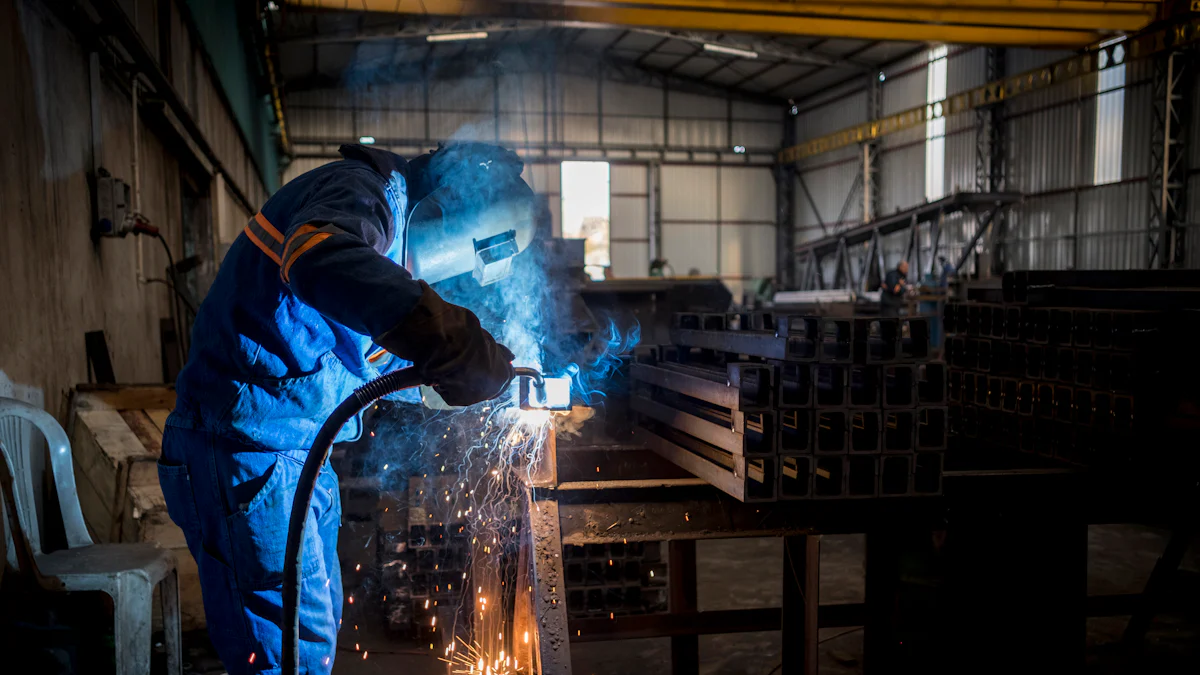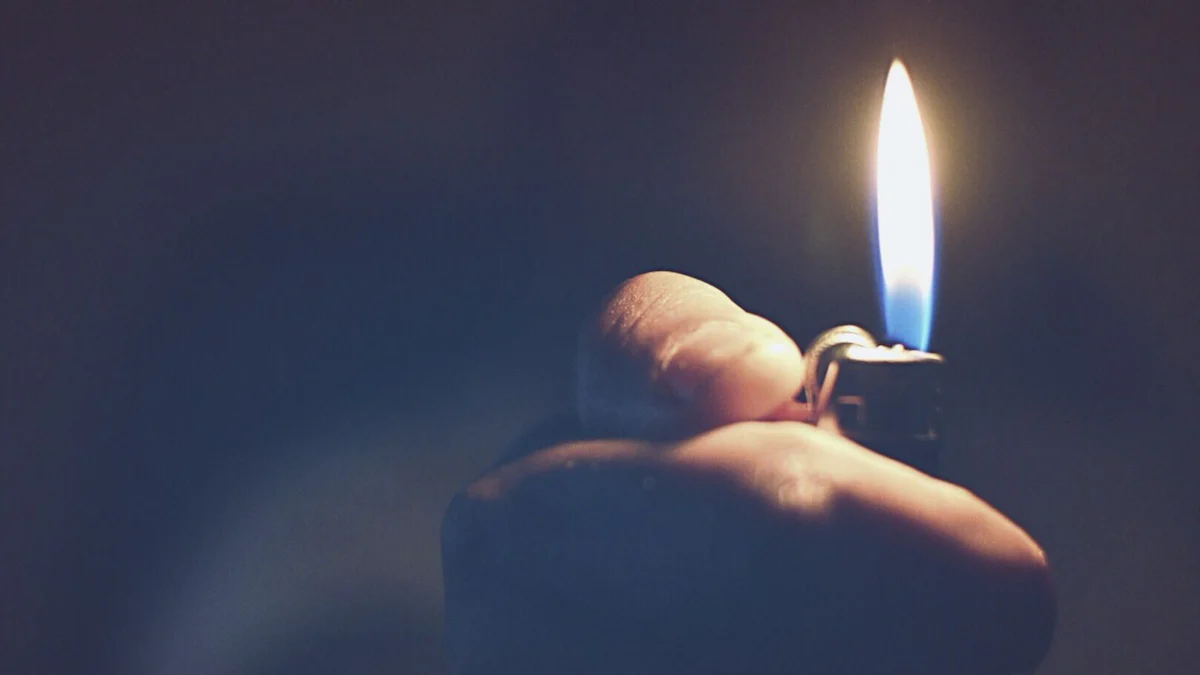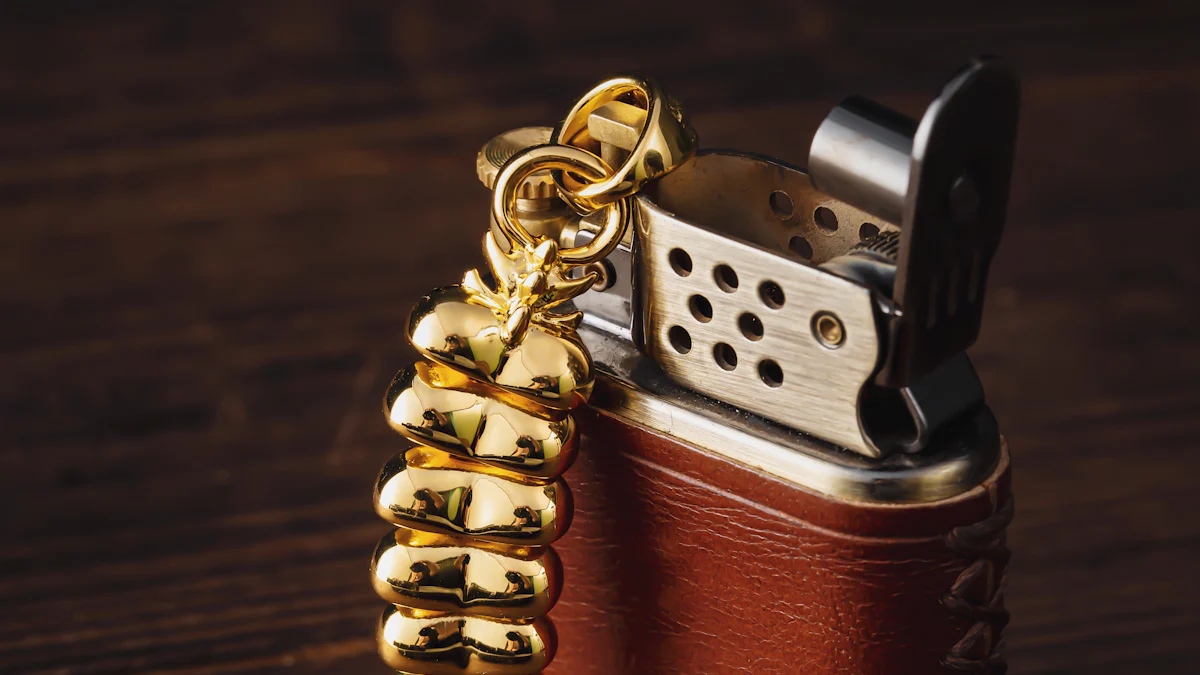
The lighter industry is booming. People rely on lighters daily, making them a profitable product. Starting your own business in this field can unlock incredible opportunities. Success begins with understanding the process. From sourcing raw materials to using a lighter making machine and even a Printing Machine for branding, planning ensures your growth.
Key Takeaways
- Learn what people want to buy. Make eco-friendly and cool lighters.
- Pick a good spot for your factory. Being close to buyers and suppliers saves money and time.
- Buy a good lighter-making machine. It helps make better and same-quality lighters every time.
Market Analysis
Current Trends in the Lighter Industry
The lighter industry is evolving rapidly. You’ll notice a growing preference for eco-friendly and refillable lighters as consumers become more environmentally conscious. Many people also seek stylish and personalized designs, making branded and custom lighters a hot trend. Disposable lighters remain popular due to their affordability and convenience. However, premium lighters with advanced features, like windproof or waterproof capabilities, are gaining traction among outdoor enthusiasts.
Tip: Stay updated on industry trends by following trade publications and attending expos. This will help you align your products with customer preferences.
Types of Lighters and Their Demand
Understanding the types of lighters can help you cater to diverse customer needs. Here’s a quick breakdown:
- Disposable Lighters: Affordable and widely used for everyday purposes.
- Refillable Lighters: Eco-friendly and cost-effective in the long run.
- Electric Lighters: Rechargeable and flameless, appealing to tech-savvy users.
- Luxury Lighters: High-end designs for collectors or gifting purposes.
Each type has its own market. For example, disposable lighters dominate convenience stores, while refillable and electric lighters attract environmentally conscious buyers.
Competitive Landscape
The lighter market is competitive but full of opportunities. You’ll find established brands like Zippo and Bic dominating the premium and disposable segments. However, smaller manufacturers often succeed by offering niche products or unique designs. Focus on what sets your brand apart. Whether it’s affordability, sustainability, or innovation, your unique selling point will help you carve out your space in the market.
Note: Research your competitors thoroughly. Identify gaps in their offerings and position your business to fill those gaps effectively.
Business Setup Requirements
Choosing the Right Location
The location of your manufacturing plant plays a critical role in your success. Choose a site close to your target market or distribution hubs to reduce transportation costs. Look for areas with good infrastructure, such as reliable electricity and water supply. Industrial zones often provide tax benefits and access to skilled labor. A well-chosen location can streamline your operations and boost profitability.
Tip: Visit potential sites in person. Evaluate accessibility, safety, and proximity to suppliers before making a decision.
Plant Layout and Space Requirements
Designing an efficient plant layout ensures smooth production. Allocate separate areas for raw material storage, production, quality testing, and packaging. Ensure there’s enough space for your lighter making machine and other equipment. A well-organized layout minimizes delays and improves workflow. Plan for future expansion to accommodate business growth.
Investing in a Lighter Making Machine
The lighter making machine is the backbone of your production process. Invest in a high-quality machine that suits your production scale. Modern machines offer features like automation and precision, which improve efficiency. Research different models and choose one that balances cost and performance. A reliable machine reduces downtime and ensures consistent product quality.
Note: Regular maintenance of your machine is essential. This prevents breakdowns and extends its lifespan.
Procuring Raw Materials
Secure high-quality raw materials to produce durable and safe lighters. Common materials include plastic, metal, and fuel. Build relationships with trusted suppliers to ensure a steady supply. Bulk purchasing often reduces costs. Always prioritize quality to meet safety standards and customer expectations.
Workforce Needs and Training
Hire skilled workers to operate machinery and manage production. Train your workforce to handle the lighter making machine and follow safety protocols. A well-trained team ensures efficient operations and reduces errors. Offer ongoing training to keep your employees updated on new techniques and technologies.
Callout: A motivated and skilled workforce is your greatest asset. Invest in their growth to achieve long-term success.
The Lighter Manufacturing Process

Step-by-Step Production Process
Creating lighters involves several precise steps. First, you prepare the raw materials, such as plastic, metal, and fuel. These materials are then fed into the lighter making machine. This machine molds the plastic into the lighter’s body and assembles the internal components, including the ignition system and fuel chamber. Once assembled, the lighters move to the next stage for testing.
Automation plays a key role in modern manufacturing. A high-quality lighter making machine ensures accuracy and speeds up production. You can produce hundreds or even thousands of lighters daily, depending on your machine’s capacity. Regularly monitor the process to maintain efficiency and address any issues promptly.
Tip: Document each step of your production process. This helps you identify areas for improvement and ensures consistency.
Quality Assurance and Testing
Quality assurance is vital for building trust with your customers. Test each lighter to ensure it functions properly and meets safety standards. Check for issues like fuel leakage, ignition problems, or structural defects. Use specialized equipment to simulate real-world conditions, such as wind or moisture, to test durability.
You should also conduct random inspections during production. This helps you catch defects early and reduce waste. A reliable lighter making machine can minimize errors, but human oversight remains essential.
Callout: High-quality products lead to satisfied customers and repeat business. Never compromise on quality.
Packaging and Distribution
Packaging protects your lighters and makes them appealing to buyers. Use durable materials to prevent damage during transit. Design your packaging to reflect your brand identity. Clear labeling, including safety instructions, is crucial.
Once packaged, distribute your products efficiently. Partner with reliable logistics providers to ensure timely delivery. You can also explore direct-to-consumer options, such as online sales, to reach a broader audience.
Note: Efficient distribution reduces costs and improves customer satisfaction. Plan your logistics carefully.
Financial Planning
Capital Investment and Costs
Starting a lighter manufacturing business requires careful financial planning. Your initial investment will cover essential items like machinery, raw materials, and plant setup. A high-quality lighter making machine can cost anywhere from $10,000 to $50,000, depending on its features and capacity. You’ll also need to budget for storage facilities, packaging equipment, and safety gear.
Don’t forget about licensing fees and certifications. These are mandatory for compliance and can vary by region. Allocating funds for branding and marketing is equally important. A strong brand presence will help you attract customers and stand out in the market.
Tip: Create a detailed budget. This will help you track expenses and avoid overspending.
Operating Expenses
Once your business is up and running, you’ll face ongoing costs. These include utility bills, employee salaries, and raw material replenishment. Maintenance for your machinery is another recurring expense. Efficient operations can help you minimize waste and reduce costs.
You should also set aside funds for unexpected repairs or emergencies. Planning for these expenses ensures your business remains stable during challenging times.
Revenue Projections
Understanding your revenue potential is key to success. Estimate how many lighters you can produce and sell each month. Research market prices for different types of lighters. For example, disposable lighters may sell for $1 each, while luxury lighters can fetch $50 or more.
By calculating your production capacity and pricing, you can forecast your monthly income. This will help you set realistic sales goals and measure your progress.
Profit Margins and ROI
Your profit margin depends on how efficiently you manage costs. Aim for a balance between affordability and quality. High-quality products often justify higher prices, leading to better margins.
Track your return on investment (ROI) regularly. This shows how quickly your business is growing. A strong ROI indicates that your strategies are working and motivates you to scale further.
Callout: Smart financial planning lays the foundation for long-term success. Take control of your finances to achieve your goals.
Regulatory and Environmental Considerations

Licenses and Certifications
Starting a lighter manufacturing business requires you to obtain the right licenses and certifications. These documents ensure your business operates legally and meets industry standards. Research the specific permits required in your region. Common examples include a business license, fire safety clearance, and environmental permits.
You may also need certifications to prove your products meet safety and quality standards. For instance, ISO certifications can enhance your credibility and attract more customers. Keep your paperwork organized and up to date to avoid legal issues.
Tip: Consult a legal expert or business advisor to guide you through the licensing process. This saves time and ensures compliance.
Compliance with Safety Standards
Safety should always be your top priority. Lighters are flammable products, so you must follow strict safety regulations. Design your manufacturing process to minimize risks. Use high-quality materials and test your products thoroughly.
Train your employees to handle equipment safely. Provide them with protective gear and clear instructions. Regular safety audits can help you identify and fix potential hazards. Meeting safety standards not only protects your workers but also builds trust with your customers.
Callout: A safe workplace leads to higher productivity and fewer accidents. Make safety a core part of your business culture.
Managing Environmental Impact
Sustainability matters more than ever. You can reduce your environmental footprint by using eco-friendly materials and energy-efficient machinery. Refillable lighters are a great way to appeal to environmentally conscious buyers.
Dispose of waste responsibly. Partner with recycling facilities to handle plastic and metal scraps. Limit emissions by maintaining your equipment and using cleaner fuels. Small changes can make a big difference for the planet and your brand reputation.
Note: Customers appreciate businesses that care about the environment. Show your commitment to sustainability through your actions.
Risk Management
Identifying Business Risks
Every business faces risks, and your lighter manufacturing venture is no exception. Identifying these risks early helps you prepare for challenges. Common risks include supply chain disruptions, equipment breakdowns, and fluctuating raw material costs. Market competition can also pose a threat, especially if larger brands dominate your niche.
Operational risks, like workplace accidents or product defects, can impact your reputation and finances. Regulatory non-compliance is another potential issue. Failing to meet safety or environmental standards could lead to fines or legal action.
Tip: Create a risk checklist. This will help you monitor potential issues and stay proactive.
Mitigation Strategies
You can’t eliminate risks, but you can reduce their impact. Build strong relationships with multiple suppliers to avoid disruptions. Regularly maintain your machinery to prevent costly breakdowns. Monitor market trends to stay ahead of competitors.
Train your employees thoroughly to minimize workplace accidents. Implement strict quality control measures to ensure your products meet safety standards. Staying compliant with regulations protects your business from legal troubles.
Callout: A well-prepared business is a resilient business. Take small steps today to safeguard your future.
Insurance and Contingency Planning
Insurance acts as a safety net for your business. Invest in policies that cover property damage, liability, and employee safety. Product liability insurance is especially important for a lighter manufacturing business. It protects you if a defective product causes harm.
Develop a contingency plan for emergencies. Outline steps to take during equipment failures, supply shortages, or natural disasters. A clear plan ensures you can respond quickly and minimize losses.
Note: Planning for the unexpected gives you peace of mind. You’ll feel confident knowing your business can weather any storm.
Starting a lighter manufacturing business is an exciting journey. You’ve learned the key steps—from market research to production and compliance. Success begins with careful planning and a commitment to quality. Take that first step today. Your vision can become a thriving business. Believe in your potential and start building your future now!
FAQ
What is the minimum investment required to start a lighter manufacturing business?
You’ll need at least $50,000 to cover machinery, raw materials, and setup costs. Start small and scale as your business grows.
Tip: Create a detailed budget to manage your finances effectively.
How can I make my lighter brand stand out in a competitive market?
Focus on unique designs, eco-friendly options, or advanced features like windproof lighters. Build a strong brand identity through quality and customer engagement.
Callout: Innovation and customer satisfaction are your keys to success! 🚀
Are there any eco-friendly options for lighter manufacturing?
Yes! Use refillable designs, recyclable materials, and energy-efficient machinery. These steps reduce waste and attract environmentally conscious customers.
Note: Sustainability boosts your brand image and appeals to modern buyers. 🌱

